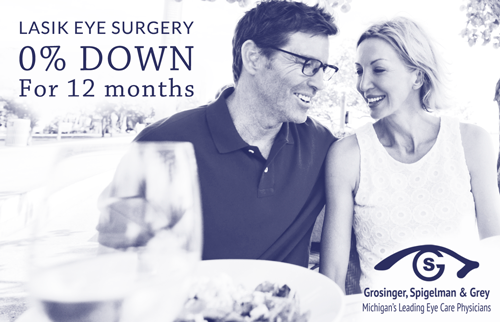 A large percentage of the American population uses various forms of corrective lenses to improve their vision. There are a number of different eye ailments that may cause a person to need corrective lenses, such as astigmatism, nearsighted, or farsightedness, or even partial cataracts. To correct their vision many people use contact lenses while others prefer the more traditional look of glasses. A growing number of people are searching for alternatives to the various types of corrective lenses. LASIK, or Laser-Assisted-In-Situ-Keratomileusis, is one of the most commonly performed corrective treatments available today.
A large percentage of the American population uses various forms of corrective lenses to improve their vision. There are a number of different eye ailments that may cause a person to need corrective lenses, such as astigmatism, nearsighted, or farsightedness, or even partial cataracts. To correct their vision many people use contact lenses while others prefer the more traditional look of glasses. A growing number of people are searching for alternatives to the various types of corrective lenses. LASIK, or Laser-Assisted-In-Situ-Keratomileusis, is one of the most commonly performed corrective treatments available today.
The LASIK Process
The first commercial use of LASIK eye surgery was implemented in 1991 in ten special vision clinics. Since its implementation LASIK has seen several advances in technology making it safer, faster, and more effective. The actual surgical process is relatively quick, with the procedure taking approximately 60-90 minutes from beginning to end. Before the surgery begins anesthetic eye drops are applied. Once the eye is numb, a special suction tool is used to stabilize the eye for surgery. Once the eye is stabilized, a small flap is made in the surface of the cornea and lifted to the side. A specially designed laser is then used to reshape the cornea and then the flap is set back in place. A bandage contact lens is applied and the procedure is finished.
It is important to follow all care instructions given by the ophthalmologist. Patients are given antibiotic eye drops as well as special drops to reduce inflammation. These drops are used for several weeks following the procedure. In addition to medicated eye drops, patients are given dark glasses, and at times protective goggles, to protect their eyes from exposure to bright lights and rubbing while sleeping. Most patients are able to resume their normal activities the day after their procedure. Effects of LASIK may be seen within minutes of the completion of the surgical procedure and further vision improvements will develop over the next several weeks or months.
Grosinger, Spigelman & Grey will have you seeing crystal clear in no time at all. With over 30 years of combined experience in the industry, you’ll be well on your way to no longer depending on your corrective lenses.
